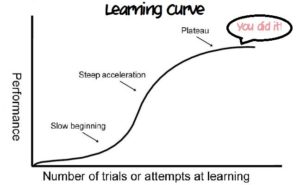This post is not for the SEO specialist or professional. It is for the website owner, who has not yet implemented SEO or has implemented this unsuccessfully and is therefore a little confused.
Two different expectations from SEO
SEO or search engine optimization is the one digital marketing service almost everyone has heard of. The need to rank one’s own website on page 1 of Google’s search results and that too rank among the topmost results on page 1 – is a deep-rooted need. SEO is the service that is believed to meet this need.
Website owners have two different expectations from SEO and the high ranking it is believed to get. One set hopes that a high ranking in search results will bring in more business while for others it’s just a prestige issue of sorts: they simply do not like to see their competitor sites rank above their own website.
Two challenges in ranking high on Google
In our experience, very few website owners really understand what makes a high ranking possible or not possible. Website owners typically believe that there is a set of techniques out there, that when implemented by experts, almost always ensures a good search engine ranking.
This however is not wholly true.
Firstly, Google has itself never said that adopting these techniques (actually practices) will definitely lead to a better ranking in the search results. Google itself doesn’t want any site to be able to “game” the search results, by working according to a simple formula given by it. Rather, Google wants sites to rank based on merit, which means sites based on their perceived usefulness by their users.
According to Google, implementing SEO techniques can at best aid in a better ranking but can by no means guarantee it. Here is what their official SEO starter guide says:
“You should build a website to benefit your users, and any optimization should be geared toward making the user experience better. One of those users is a search engine, which helps other users discover your content. Search Engine Optimization is about helping search engines understand and present content”.
Website owners forget that the website’s merit matters more than the SEO techniques. In the first place, a website needs to be built that is useful to and worthy of being appreciated by it’s users.
The second challenge in getting a high ranking in Google is that the practice of SEO appeals particularly to the techies. As the majority of the SEO techniques require tinkering to be done with a website’s code, doing this is fairly easy to learn as well for someone who’s into code. The net result is that the majority of SEO practitioners are techies rather than marketing or content people. A strategic, content-led approach gets overlooked in favour of a tech approach, though both are needed for success in ranking in search.
Thus, only two of the ten major SEO practices (as given in Google’s official SEO starter guide ) are about content:
- Help Google find your content
- Tell Google which pages shouldn’t be crawled
- Help Google (and users) understand your content
- Manage your appearance in Google Search results
- Organize your site hierarchy
- Optimize your content
- Optimize your images
- Make your site mobile-friendly
- Promote your website
- Analyze your search performance and user behavior
And at least seven of the above ten practices require a person comfortable with code or with web technology. (The last of the ten practices requires simple analytical skills rather than content or tech skills).
6 key factors that you can influence to improve your site’s rank in Google
Here’s our own take on what it takes to get a good rank in Google’s search results:
- The website should be technically sound.
- The website should be user-friendly.
- The website content should be well-written.What is meant by well-written website content is a subject in itself but for the purposes of this blog post we can briefly summarize this as being content that (a) the user finds useful and (b) which is grammatically correct.
- The website should have lots of content – in terms of pages, words, images or products and services – rather than less content.E.g. It’s difficult to rank high for a website of 5 pages, built around one product and having just a few hundred words and a couple of product images.
The majority of websites that we encounter, don’t meet the above four requirements. Therefore, when we are asked to do an SEO project, we work with the client to fix these at the earliest.
Here is one more important ranking factor.
5. The website content should be around one single, focused theme.
E.g. it’s not useful enough to write what widgets you make and sell, this is too broad, there will be other companies making similar widgets. Rather, you need to convey what specific benefits your widgets provides its customers and how your widgets are different and/or better than competing widgets.
Let’s say, there is a soap brand which has the most environmentally friendly packaging in the market e.g. degradable non-plastic packaging. It’s better to focus the content of the site on how this brand is going to make a difference to the world. And of course, as the demand for environmentally friendly packaging products grows, the number of searches for such soaps and the traffic to this soap website too will increase.
6. Implement the on-page SEO practices
This is about actually implementing the tech SEO practices listed above in the two challenges section – and which will require you to hire an SEO expert. (On-page is the set of SEO techniques done on the website itself).
Which are the most important of the 6 factors ?
All good sites are supposed to have good tech and good user interfaces (factors 1 and 2 above). And over the years, as we have seen an improvement in these tech and UI ratings, we believe that most sites will eventually get there. All sites will eventually also get around to hiring a SEO expert, who implements the various SEO techniques (factor 6). Therefore, for a given product or service category, in the long run the game will be often about excelling in the content factors viz. factors 3 , 4 and 5 above.
If one considers the Indian market (one suspect this applies globally too), organizations are under-investing in the content resources for their websites vis-a-vis investments in tech, UI and SEO.
Website content improvements are likely to remain largely unaddressed. Content is the final frontier. More on this in a subsequent post.
P.S.: To know about our own SEO services, visit our website.

